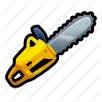4 Simple Tips for Finishing Concrete
Concrete trowels are a must if you want to give your concrete floor a glossy and professional finish. Concrete trowels are construction machines used for final finishing of concrete surfaces. The finishing process gives the concrete surface a smooth and even finish, and is primarily performed on vast and flat slabs of newly-poured concrete, from interior floors and balconies to patio decks and rooftops. Concrete trowels outperform manual trowels when it comes to concrete strength, durability and evenness.
When searching for concrete trowels, you will find that they are either powered by an electric motor or by an internal combustion engine. This, of course, varies from model to model, and for the type of work it’s used for. The size of the trowel blades responsible for the finishing process depend on the type of work, and range from 24 to 48 inches long. Each type of trowel blade is named after the work stage it’s used for: floating, finish and combined. Basically, the concrete trowel’s engine or motor provides the power needed to turn the blades. The trowel blades level the concrete and ensure the surface becomes smooth.
Concrete trowels aren’t as widely-known as jackhammers or chainsaws, but they are worksite mainstays nonetheless. The machine is essential when building concrete buildings and floors, as they help ensure a properly finished surface. Whether you’re new to construction or an experienced builder, it pays to equip yourself with the knowledge required to ensure a perfect flat and glossy concrete surface. Here are some tips and tricks to ensure a perfect glossy surface every single time.
Selecting the right concrete trowel
Not all concrete trowels are built the same, that’s why it’s important to select one that fits your finishing needs. For small projects and corner poured concrete, use a manual trowel instead. You need to be fast when working with a concrete trowel. Concrete hardens quickly, so it’s important to complete the task before you’re left with a hard and unworkable slab.
For projects with concrete slabs of up to 1000 square feet, use a concrete trowel with 24 to 26 in blades. For smoothing the concrete, you can either use a combined blade or separate the task into a float and finish blade.
For projects with concrete surfaces larger than 1000 square feet, use a ride-on concrete trowel. Ride-on concrete trowels do the job faster than push concrete trowels. You’ll have enough time to do the finishing before the concrete hardens. Use the larger blades when finishing with a ride-on power trowel.
Prioritise safety
Workplace and personal safety should be everyone’s priority, and concrete trowel operations is no different. A malfunctioning concrete trowel can pose a danger to everyone nearby and compromise the security of the worksite. Concrete trowel operators should wear personal safety gear such as hearing protection, safety goggles or face guard, work gloves with vibration dampeners and steel-toed work boots.
Do not operate a concrete trowel powered by a petrol engine indoors, or in enclosed spaces without good ventilation. The engine emits a colourless, odorless and toxic gas called carbon monoxide. If you suddenly feel weak or lightheaded while operating a concrete trowel, immediately shut the machine off and leave the work floor for fresh air.
Check your timing
Concrete finishing is all about the timing. Pouring or finishing the concrete under the wrong conditions can delay or cripple the entire project. Coordinate with your supervisor and make sure the weather is dry, windy and warm when pouring the concrete slab. Cold and wet conditions can affect the curing process, ruining the concrete.
Wait until the concrete surface has solidified to the point that it can support the load of the operator and the concrete trowel. Too soft a concrete and the trowel will just destroy the surface. On the other hand, waiting too long before starting the concrete trowel and the concrete would have hardened too much. A good rule of thumb is to step on the surface and checking the underside of your shoes for concrete residue. If it’s free of residue, it’s time to finish the concrete.
Take your time when moving the concrete trowel around. Fast movements can ruin the surface and make the finishing process all the more difficult.
Position yourself
Using a concrete trowel oftentimes feels like controlling a stubborn bull. Hold the machine before turning on the engine so you can control its initial movement. Wait until you’ve gotten the feel of its movement before starting finishing. Most concrete trowels move the same way: lifting the handles makes it go left, pushing it downwards forces it right. The time between action and movement will be delayed so don’t force the machine or make multiple movement commands.
